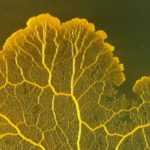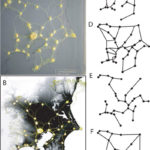Brainless slime mold grows in pattern like Tokyo’s subway system
A group of researchers led by Toshiyuki Nakagaki from the Hokkaido University in Japan, placed Physarum polycephalum in a petri-dish scattered with oat flakes. The position of food scraps was deliberately placed to replicate the locations of some of the most visited site in Tokyo. In the first few hours, the slime mold’s size grew exponentially, and it branched out through the entire edible map. Within a few days, the size of its branches started to shrink, and the slime mold established a complex branching network between the oats on the petri-dish. Despite growing and expanding without a central coordination system like the brain, the mould had re-created an interconnected network made of slimes that looks almost exactly like the efficient, well-designed Tokyo subway system.
Learn about our two Decals!
 Click here to find out more about our Fall Bioinspired Design Decal and our Spring Bioinspired Design in Action Decal – ALL MAJORS are welcome.
Click here to find out more about our Fall Bioinspired Design Decal and our Spring Bioinspired Design in Action Decal – ALL MAJORS are welcome.Berkeley BioDesign Community
 Click here to learn about the BioD: Bio-Inspired Design @ Berkeley student organization or here to signup for more info.
Click here to learn about the BioD: Bio-Inspired Design @ Berkeley student organization or here to signup for more info.Search
Student Login






I imagine that the neurological circuits underlying these processes are governed by both 2d spacing maps with their brains as…
to reduce the impact of car accidents, it may be possible to study the force diverting physics of cockroaches to…
you see this type of head-bobbing stability in many avian creatures related to pigeons like chickens. the head ability to…
not like they taught horses how to run! this is an example of convergent evolution where both sea creatures and…
The brain functions in a similar way with neuronal connections. our brains are able to utilize the multiplicity of connections…